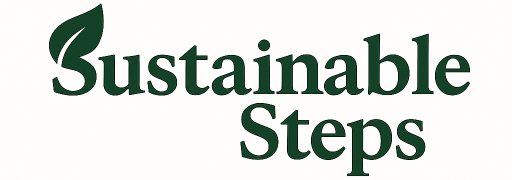Introduction
As environmental and social concerns continue to shape consumer expectations and regulatory frameworks, companies are under increasing pressure to build sustainable supply chains. It’s no longer enough to focus on your internal practices—your suppliers’ sustainability standards are just as critical to your brand’s integrity, risk management, and long-term success.
So how can you assess the sustainability credentials of your suppliers with confidence?

In this guide, we’ll walk you through the key criteria, tools, and steps to evaluate supplier sustainability, helping you make responsible sourcing decisions that align with both your values and your bottom line.
Why Supplier Sustainability Matters
Before diving into assessment methods, let’s explore why supplier sustainability is so important:
- Brand reputation: Consumers expect transparency and ethical sourcing.
- Regulatory compliance: Laws such as the EU Supply Chain Act and California’s Transparency in Supply Chains Act require due diligence.
- Operational risk mitigation: Environmental violations, labor abuses, or poor waste management by suppliers can disrupt your operations.
- Investor and stakeholder expectations: ESG (Environmental, Social, Governance) standards are now a financial priority.
- Long-term resilience: Sustainable suppliers are better equipped to weather environmental and market disruptions.
Key Areas to Evaluate in Supplier Sustainability
To comprehensively assess your suppliers, focus on these five core pillars:
1. Environmental Impact
- Carbon footprint: Does the supplier measure and report greenhouse gas emissions?
- Energy sources: Are they using renewable energy in production?
- Water usage: Are there conservation strategies in place?
- Waste management: Do they minimize waste and recycle materials?
- Materials sourcing: Are raw materials responsibly sourced?
2. Labor Practices and Human Rights
- Do they comply with international labor laws (ILO standards)?
- Are workers paid fairly and working in safe conditions?
- Are there protections against child labor and forced labor?
- Is there diversity and inclusion in hiring practices?
3. Ethical Governance
- Is there a code of ethics or conduct in place?
- How is corruption, bribery, or fraud prevented?
- Are supplier subcontractors held to the same standards?
4. Health, Safety, and Community Engagement
- What health and safety standards are upheld in their facilities?
- Do they engage in local community development or education?
- Is there transparency in safety incident reporting?
5. Certifications and Audits
- Do they hold recognized certifications (e.g., ISO 14001, SA8000, B Corp)?
- Have they undergone recent third-party audits or assessments?
- Are audit results available and transparent?
Step-by-Step Process for Assessing Supplier Sustainability
Step 1: Develop a Supplier Sustainability Policy
Start by creating a clear, public-facing policy that outlines:

- Your company’s sustainability goals
- Minimum standards for environmental, social, and ethical performance
- Expectations for transparency, audits, and improvements
This acts as a framework for evaluating all current and prospective suppliers.
Step 2: Conduct Initial Supplier Risk Screening
Use a preliminary assessment to identify high-risk suppliers based on:
- Country of operation (labor or environmental risk zones)
- Industry or material type (e.g., mining, textiles)
- Size and complexity of their operations
Tools to help:
- World Bank governance indicators
- Verisk Maplecroft risk indexes
- Global Slavery Index
Step 3: Send Sustainability Self-Assessment Questionnaires (SAQs)
Create or use standardized SAQs that ask suppliers to disclose:
- Sustainability policies
- Environmental performance metrics
- Social responsibility practices
- Compliance with local and international standards
- Certifications or third-party verifications
Tip: Use platforms like EcoVadis, Sedex, or CDP Supply Chain for standardized assessments.
Step 4: Request Supporting Documentation
Ask suppliers to provide proof of claims, such as:

- Audit reports
- Emission and energy usage data
- Ethical sourcing certifications (e.g., FSC, Fairtrade, GOTS)
- CSR or ESG reports
- Employee training records
This ensures transparency and enables benchmarking.
Step 5: Conduct Third-Party Audits or Site Visits
For critical or high-risk suppliers, conduct audits to verify practices on the ground.
Audit types include:
- Environmental audits (waste, emissions, resource use)
- Labor and social compliance audits
- Health and safety inspections
Partner with organizations that specialize in ethical trade audits (e.g., SGS, Bureau Veritas, WRAP).
Step 6: Score and Rank Supplier Performance
Create a supplier scorecard with weighted metrics based on your priorities.
Example metrics:
- Carbon reduction initiatives (25%)
- Labor standards compliance (20%)
- Ethical sourcing (20%)
- Third-party certifications (15%)
- Health & safety practices (10%)
- Transparency & reporting (10%)
Use this to compare suppliers and make data-driven decisions about sourcing.
Step 7: Offer Feedback and Improvement Plans
Don’t immediately cut ties with non-compliant suppliers—work with them to improve.
- Provide a corrective action plan (CAP)
- Offer training resources or partner support
- Set timelines for compliance improvements
Continuous improvement fosters stronger partnerships and long-term alignment.
Tools and Platforms to Streamline the Process
Here are leading platforms that support supplier sustainability assessments:

- EcoVadis: Global sustainability ratings with performance benchmarks
- Sedex: Ethical trade and labor compliance assessments
- CDP Supply Chain: Environmental disclosure and impact data
- IntegrityNext: Real-time monitoring of ESG compliance
- Sourcemap: Supply chain transparency and traceability software
Challenges to Be Aware Of
- Data inconsistency: Smaller suppliers may lack reporting infrastructure.
- Greenwashing: Suppliers may overstate sustainability claims—always verify.
- Cultural and regional differences: What’s standard in one country may be poor practice in another.
- Audit fatigue: Multiple customers conducting audits can strain suppliers—coordinate when possible.
Conclusion
Evaluating the sustainability credentials of your suppliers is no longer optional—it’s a critical component of responsible business and risk management. By focusing on transparency, measurable data, and third-party verification, you can ensure your suppliers are aligned with your sustainability goals.
Whether you’re just starting your sustainable sourcing journey or refining an existing process, a structured assessment strategy will help you build a supply chain that’s ethical, resilient, and future-proof.
